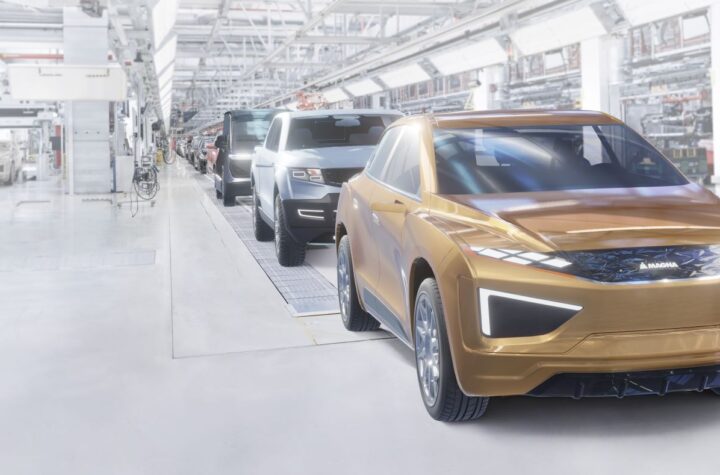
 Doesn’t it bug you, too, that every other airhead on the road seems to have his/her fog lamps on? All the time! Like they were some kind of fashion accessory!
Doesn’t it bug you, too, that every other airhead on the road seems to have his/her fog lamps on? All the time! Like they were some kind of fashion accessory!
Why do so many motorists whose vehicles increasingly feature fog lamps not understand or care when they should be on and when (almost always) they should not? Do they think they look cool with fogs on? Do they think they’re easier to see, and therefore safer? (If so, I hope they don’t discover brights!) Do most even realize they’re on?
Have they considered that, besides annoying other drivers, burning those bulbs for no good reason also wastes energy (fuel) and eventually burns them out? I think not.
Granted, fog lamps can be fine jewelry on the faces of modern sports and luxury vehicles. But they look better unlit — except in ads, where (setting a bad example, as usual) they’re typically pictured burning brightly. But too many are too bright and/or mis-aimed and truly hurt my over-worked eyes, and I’ve heard and read complaints from others as well.
Fog lamps can be highly useful to “see under” thick fog, driving rain or blowing snow that reflects even low-beams back into your eyes at night. In such conditions, used with “park” lamps instead of headlamps, they can help drivers see further ahead and illuminate the road’s edges at reasonable speeds. That’s what they’re for.
Most BMWs have fogs, and their show-off drivers typically leave them on. Drivers of pickups and SUVs must think they’re making macho statements with fogs. Pilots of Pontiacs and supercharged Subarus with fog lamps big as saucers must be BMW-driver wannabes.
The more expensive the car, the more likely it is to have fogs, the more likely its driver will be showing them off. This makes main roads in affluent suburbs serious eye-strain alleys.
Speaking of eyestrain, how about those blue-tint HID (high intensity discharge) Xenon headlamps, which have become expected equipment on the same upscale autos whose drivers think fog lamps are cool for cruisin’? Brighter and broader of beam than conventional lamps, they’re great for lighting your way but can be brutal coming at you — especially on taller trucks and SUVs, or if aimed too high or approaching over a rise.
A recent study (funded by leading supplier Osram Sylvania) found 81 percent of HID users citing “vision improvement” as their major advantage. Fully 92 percent said they would buy HID-equipped vehicles again, but 20 percent cited concerns about glare and being “flashed” by oncoming cars. Osram Sylvania predicts U.S.-market HID penetration exceeding 13 percent by 2007. Oh, my aching eyes!
Then come DRLs (Daytime Running Lights), lower-power lamps that burn full-time. Because they’re proven to reduce accidents by making vehicles easier to see, especially in shadows and low-light conditions, DRLs have been required for years in Canada and Sweden.
Swedish Saabs and Volvos and German VWs have long sported them here. GM made a point of equipping all of its U.S. vehicles with them in the late 1990s, and they have spread to other brands as well. Why? Whenever a carmaker can reduce accidents involving its products, it’s a win-win situation: less risk for you and me and fewer lawsuits for them.
Although DRLs are dimmer than low-beam headlamps, some folks are inexplicably against them. They assert, among other complaints, that added “light pollution” makes motorcycles (which burn headlamps constantly for visibility) harder to see in traffic. Some even boycott Saturn because Saturn’s DRLs were way too bright for their first couple of years.
Yes, those early Saturns were bad, but that doesn’t make DRLs a bad idea. If they make my vehicle more visible to you and yours more visible to me, that’s a plus for both of us. But automakers should learn to illuminate them only when in gear, not while idling in park. In my opinion, the best and most distinctive DRLs use the vehicle’s amber park lamps.
I’ll bet a lot of DRL dissenters are the same boneheads who think it’s cool to cruise with fog lamps on day and night. Maybe if we all keep flashing brights at these inconsiderates, they’ll eventually get the hint.
Gary Witzenburg, a former advanced technology engineering manager and part-time racing driver, is a widely published auto writer and Editor at Large of Automotive Industries.













More Stories
From Gasoline Powered Cars To Electric Vehicles | Electric Moped Bike A Best Alternative
Rubbernecking: A Silly Reason for Car Accidents
Flexible Magna Manufacturing Solutions: The Key to Success in the Automotive Industry